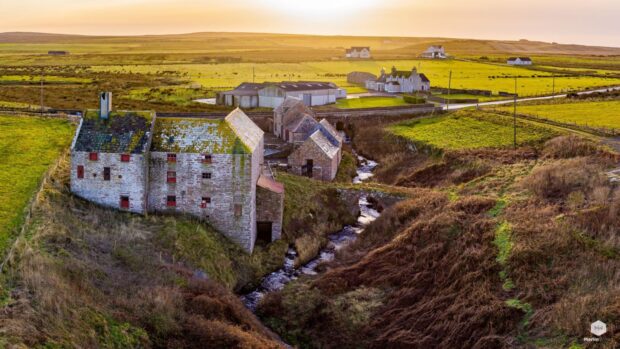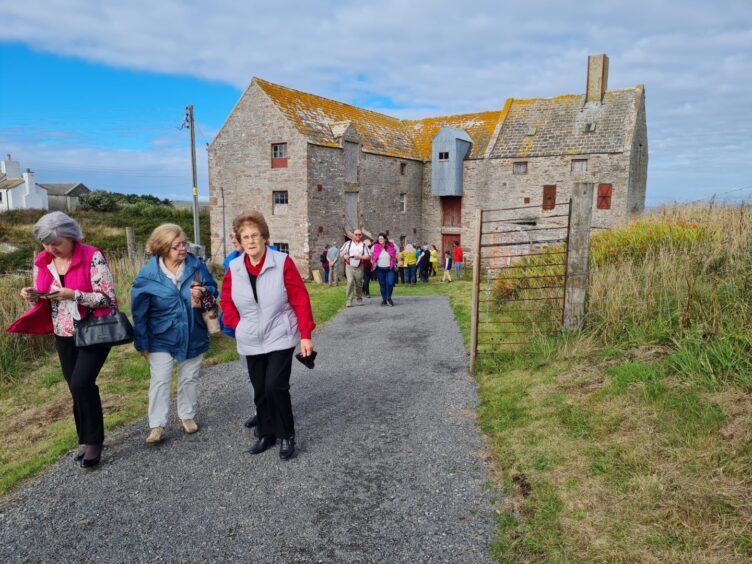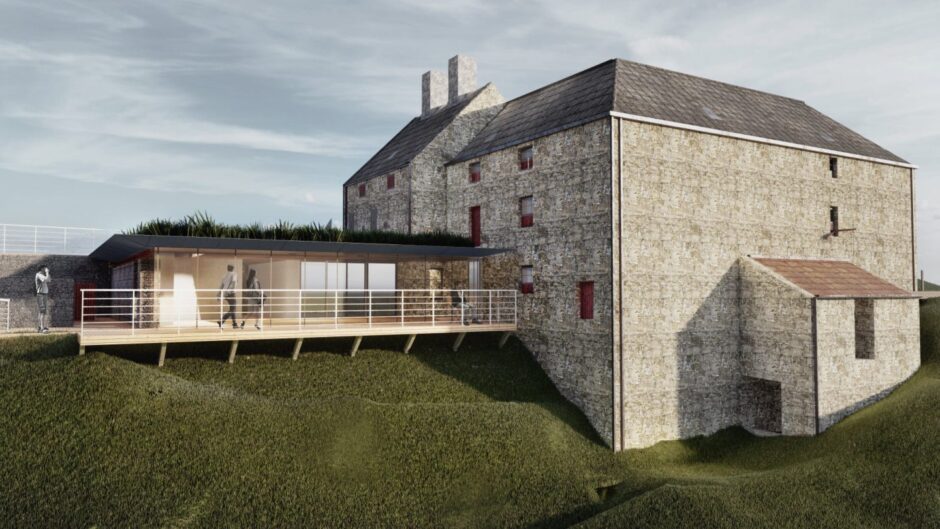The people of John O’Groats are hoping renovations to a century-old water mill can give the town a needed tourism boost.
Local contractors O’Brien Construction won the £3.2 million pound contract to renovate and add an extension to the old water mill, built in 1901.
The mill was last operational 20 years ago, and since then has sat empty. To prevent the building going derelict, a band of community members formed the John O’ Groats Mill Trust in 2017, buying the building in 2020.
Since then the group has been fundraising and developing a business plan to turn the old mill into a heritage site.
Bryony Robinson, development manager for the John O’Groats Mill, said the plan is to keep the mill working and use it for demonstrations. There will also be exhibits explaining the history of the building.
The awarding of the contract is a huge milestone and will hopefully have a knock-on benefit for the cafes and hotels in the area, she added.
She said: “John O’Groats itself is an iconic tourist destination but John O’Groats sometimes suffers from people not staying very long. So, they pop up, take a photo of the sign and then they kind of leave again.”
Many tourists come to John O’Groats for the nature, she added. But once completed, the mill will become a new wet weather destination for tourists.
John O’Groats Mill had long journey to renovations
Located on Scotland’s north coast, the existing building was completed in 1901 as a water-driven corn mill.
The site has been used for milling since at least 1750. The mill was in operation until around 20 years ago when the last miller died.
She said: “It’s a huge milestone for the mill, for the trust and for the community.
“What is really lovely about it is it’s actually tangible now, people can see the work starting on site and it becomes much more obvious something is actually happening.”
Funding for the work is coming from several sources. The biggest are the £1.5 million from the Scottish Government’s Regeneration Capital Grant Fund and £1.6 million from the National Lottery Heritage Fund.
The construction contract lasts 12 months, after which work will begin on the building’s interior.
The hope is for the site to be ready to open for the start of tourist season, around April 2025.
She said: “We’ve been very lucky the community have stuck with us.”
Returning the mill to its role as a community hub
One of the community members who has been behind the project is chair of the trust Rognvald Brown.
He worked at the mill for years during his youth and then helping out when work needed doing as he and the mill grew older. The mill continued production until suddenly stopping around the turn of the millennium when the owner died.
He said: “I was incredibly lucky as a youngster and didn’t realize it, because every Saturday I would be down on the mill. I was maybe a bit of a nerd because I was much more interested in that then doing football.
“I’ve sat and watched it all my life, and I’m just overwhelmed to see things happening there now.”
Aside from the potential economic benefits, Mr Brown said restoring the mill as a social hub of the community would help the mental health of residents.
He said: “The mill was always a meeting place.”
He said: “You can just imagine the kind of nonsense that would go on around the kiln fire on a winter’s night. We want that to survive into future generations.”



Conversation